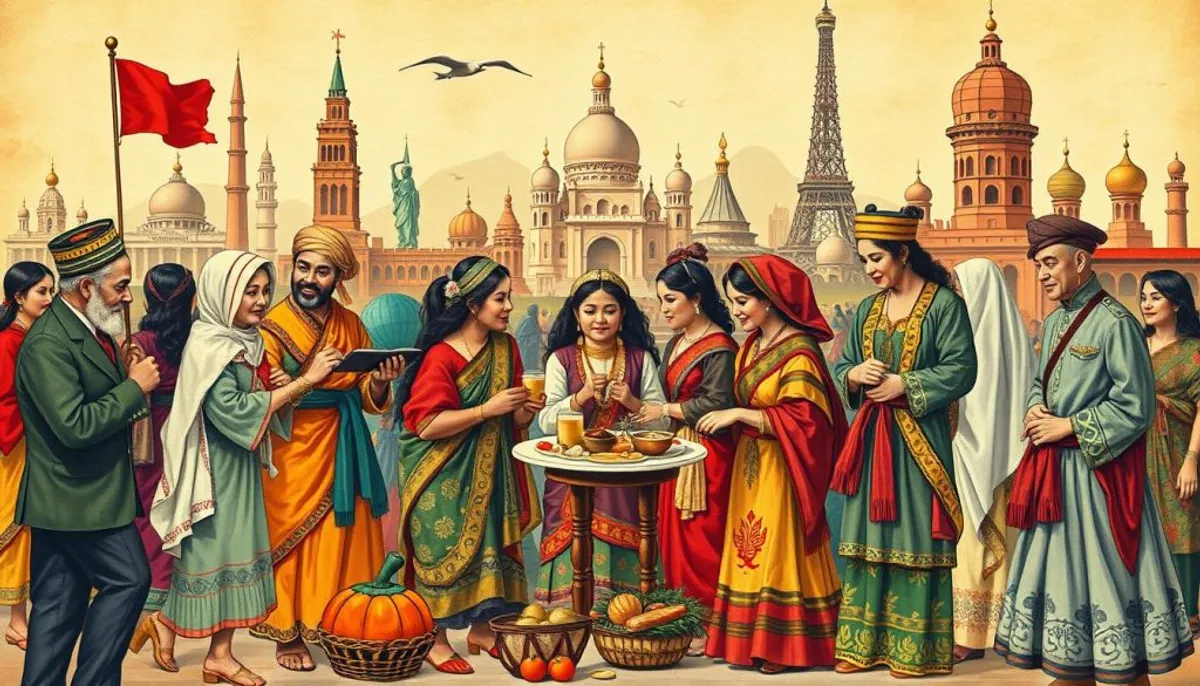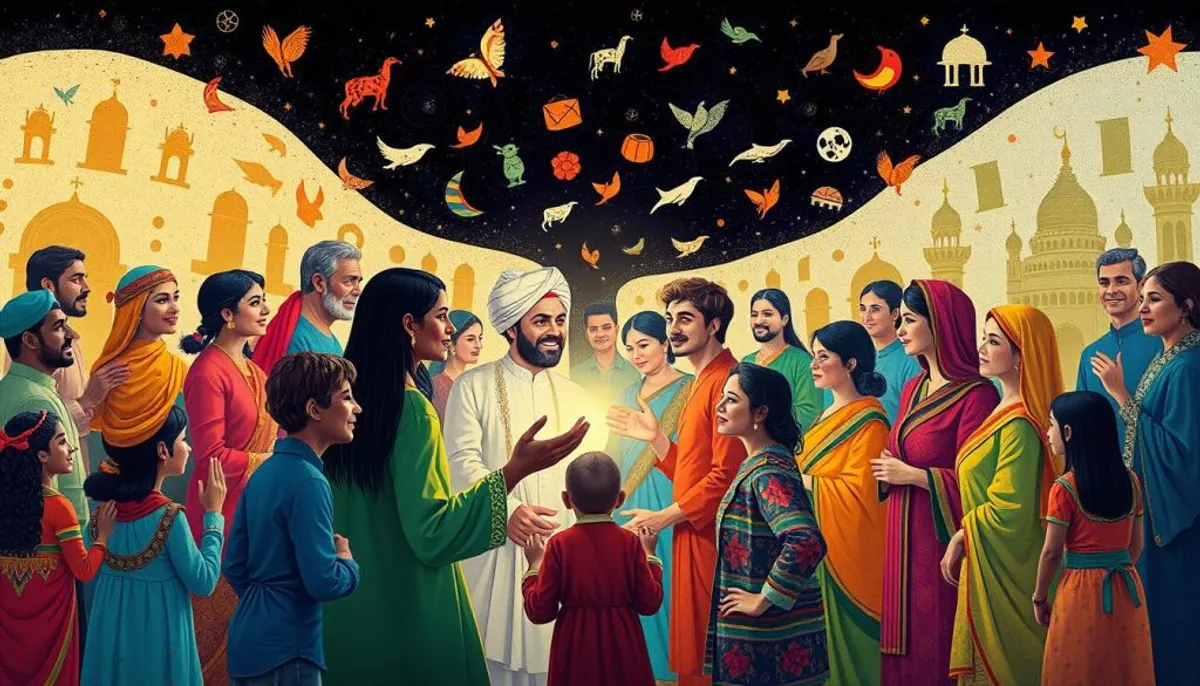In our multicultural society, understanding the distinctions between culture and interculturalism is essential. Cultural diversity enriches our daily lives, but it also presents challenges. Intercultural relations play a central role in many societal issues today.
Culture represents the set of distinctive traits of a group. It influences our values and behaviors. Interculturalism, on the other hand, focuses on interactions between cultures, encouraging exchange and collaboration.

Multiculturalism, emerging in the 1980s, highlights the coexistence of different cultures. Interculturality, in turn, aims to create bridges between them. This approach represents a major challenge for our societies, businesses, and educational systems.
Understanding these concepts is vital for navigating our globalized world. Whether for international initiatives or for living in harmony, intercultural competence has become crucial, and the assessment of pearls can play an important role in this process.
Fundamental Definition of Culture and Its Social Impact
Culture shapes our identity and influences our daily behaviors. It represents a set of distinctive cultural traits that characterize a social group. Cultural identity is constructed through various cultural factors, going far beyond just the country of origin.
Culture as a Set of Distinctive Characteristics
Cultural traits encompass various elements such as language, customs, beliefs, and values. These unique characteristics define and differentiate social groups. For example, cuisine, art, and clothing traditions are important cultural markers.
The Influence of Cultural Factors on Behavior
Cultural factors play a crucial role in shaping our attitudes and behaviors. They influence how we communicate, work, and interact with others. In the professional world, these cultural differences particularly impact the marketing and distribution strategies of multinational companies.
The Components of Cultural Identity
Cultural identity is multidimensional. It consists of elements such as family, religion, education, and profession. These components intertwine to form a unique identity for each individual within a given culture.
| Components of Cultural Identity | Examples of Impact |
|---|---|
| Family | Transmitted values, family traditions |
| Religion | Beliefs, ritual practices |
| Education | Acquired knowledge, worldview |
| Profession | Work ethic, specific skills |
What is the Difference Between Culture and Interculturalism
Culture and interculturalism are two essential pillars in our multicultural society. Culture is defined by the distinctive traits of a group, while interculturalism emphasizes exchanges between different cultures.
Cultural differences manifest through traditions, customs, and values specific to each community. Cultural interaction occurs at the interface between these groups, fostering exchange. This dynamic is central to interculturality.

Interculturality transcends mere coexistence. It involves mutual understanding and deep respect between cultures. For example, living with someone from another culture to learn from their experience illustrates this approach.
| Aspect | Culture | Intercultural |
|---|---|---|
| Definition | Characteristics of a group | Interactions between cultures |
| Approach | Static | Dynamic |
| Objective | Preserve identity | Encourage exchange |
| Social Impact | Passive coexistence | Active integration |
Cultural diversity enriches our society, but it is interculturality that allows us to maximize this wealth. It encourages dialogue, the exchange of ideas, and the creation of lasting bonds between communities.
The Concept of Multiculturalism in Our Modern Society
Multiculturalism defines our contemporary society, characterized by an increase in cultural diversity. This phenomenon manifests through the coexistence of different cultures in the same social space. This coexistence often occurs without deep interactions between them, which can sometimes lead to ethnocentric attitudes.
The Passive Coexistence of Cultures
In a multicultural society, we observe a juxtaposition of distinct cultural communities. This coexistence is reflected in ethnic neighborhoods, specialized businesses, and specific cultural events. The Olympic Games, for example, bring together athletes from around the world.
The Limits of Multiculturalism
Multiculturalism promotes cultural diversity but has its limits. The lack of interactions between different cultural groups can lead to social isolation. This situation hinders mutual understanding and intercultural dialogue, which are essential for a harmonious society.
Concrete Examples of Multicultural Societies
Many metropolises illustrate the concept of a multicultural society. In Paris, neighborhoods like Belleville or the 13th arrondissement serve as examples. These urban spaces showcase the richness of cultural diversity. However, they also highlight the challenges of integration and social cohesion in a multicultural context.
Interculturality: A Dynamic Approach to Cultural Relations
Interculturality is distinguished by its active approach to interactions between cultures. It emphasizes intercultural dialogue and cultural exchange to foster mutual understanding.
Dialogue and Exchange as Foundations
Intercultural dialogue is essential for building bridges between cultures. It allows for the sharing of ideas, values, and experiences. Cultural exchange enriches our worldview and develops our open-mindedness.

Building Lasting Intercultural Relationships
To build strong intercultural relationships, time and commitment are required. This involves working with international colleagues or living with people from other cultures. These experiences help us move beyond stereotypes and create authentic connections.
Mutual Respect and Reciprocal Understanding
Respect and understanding are at the heart of interculturality. They allow us to appreciate cultural differences without judgment. By developing our empathy and listening skills, we promote a more inclusive and harmonious society.
Interculturality goes beyond mere coexistence. It aims for the integration and mutual enrichment of cultures. It is a dynamic process that transforms our way of seeing the world and interacting with others.
The Challenges of Interculturality in Business
In our interconnected world, businesses face challenges related to diversity. Intercultural management has become essential for effectively managing multicultural teams. It thus enhances the overall performance of the company.
Intercultural communication is complex due to differences in worldviews, body language, and emotional expressions. To overcome these obstacles, managers must develop specific skills.
Intercultural management relies on four essential pillars:
- Observation and analysis of cultural differences
- Questioning viewpoints
- Acceptance of diversity
- Adaptation of management methods
French companies are implementing training to improve intercultural understanding. These aim to foster collaboration. These initiatives seek to create an inclusive environment where every employee feels valued, regardless of their cultural background.
| Situation | Intercultural Challenge | Recommended Approach |
|---|---|---|
| Expatriation | Adaptation to a new culture | Pre-departure training and ongoing support |
| International Teams | Remote communication | Collaborative tools and regular meetings |
| Mergers/Acquisitions | Integration of corporate cultures | Aware workshops and creation of common values |
By recognizing and valuing cultural differences, companies can create a harmonious work environment. This is essential for their success in a competitive global market.
Intercultural Education: A Major Societal Issue
Intercultural education represents a major challenge in our contemporary society. Since the 1970s, Europe has shown an increasing interest in interculturality in its educational policies and practices.
The Importance of Intercultural Training
Intercultural training prepares individuals for a world where mobility and cooperation with people from diverse backgrounds are crucial. In France, the 2013 competency framework requires educators to develop intercultural competence in students.
Adapted Pedagogical Strategies
Intercultural pedagogy is based on methodologies centered on otherness and self-awareness. The involvement of foreign languages by educational staff is essential for the development of these skills. A critical approach is necessary to avoid oversimplifications.
The Role of Teachers in the Intercultural Approach
Teachers play a central role in intercultural education. They must promote meaningful cultural exchanges and encourage critical reflection among students. This mission requires specific training and constant questioning of pedagogical practices.
| Aspect | Objective | Method |
|---|---|---|
| Language Skills | Effective communication | Foreign language courses |
| Cultural Awareness | Mutual Understanding | Intercultural exchanges |
| Critical Thinking | Analysis of stereotypes | Guided debates and reflections |
Obstacles to Intercultural Communication
Intercultural communication poses a considerable challenge in our modern and globalized society. It faces various obstacles that can hinder mutual understanding between individuals from diverse cultures.
Ethnocentrism and Its Impacts
Ethnocentrism, the tendency to value one's own culture above others, is a major obstacle. It leads to hasty judgments and a closed mindset towards different cultural practices. This attitude compromises the establishment of positive intercultural relationships.
Cultural Stereotypes and Prejudices
Cultural stereotypes persist and shape our perceptions. These preconceived ideas about certain cultural groups can lead to misunderstandings and tensions. To overcome these stereotypes, a conscious effort to open up and learn is necessary.
Language and Non-Verbal Barriers
Cultural barriers also manifest in non-verbal communication. Gestures, facial expressions, and interpersonal distances vary across cultures. These subtle differences can cause misunderstandings, even when the language barrier is overcome.
| Obstacle | Impact | Solution |
|---|---|---|
| Ethnocentrism | Biased judgments, closed mindset | Awareness of cultural diversity |
| Cultural Stereotypes | Misunderstandings, intercultural tensions | Intercultural education, direct exchanges |
| Language Barriers | Understanding difficulties | Language learning, use of interpreters |
To overcome these obstacles, a comprehensive approach is essential. It involves training in value sharing, negotiation, and mutual acceptance. This approach aims to foster rich and balanced intercultural communication, without falling into the trap of unilateral cultural dominance.
Conclusion
Globalization has profoundly transformed our society, making it a blend of varied cultures. This makes mastering intercultural skills more essential than ever. Interculturality transcends mere coexistence of cultures; it fosters active dialogue and mutual enrichment.
In the professional, educational, and social fields, the ability to communicate effectively across cultures has become paramount. Initiatives such as Sietar France and the research of Geert Hofstede highlight the importance of intercultural exchanges, especially in the context of international business.
To build an inclusive society, it is crucial to move beyond cultural stereotypes and prejudices. Intercultural education, supported by organizations like the Council of Europe, is essential. It shapes open-minded and respectful citizens of diversity. By developing these skills, we can overcome the challenges of our globalized era and build a more harmonious future for all.
RelatedRelated articles


